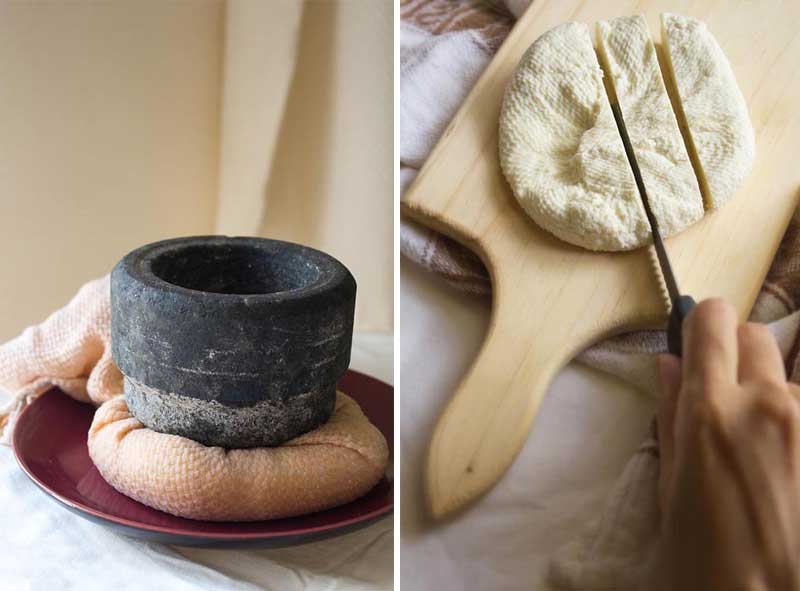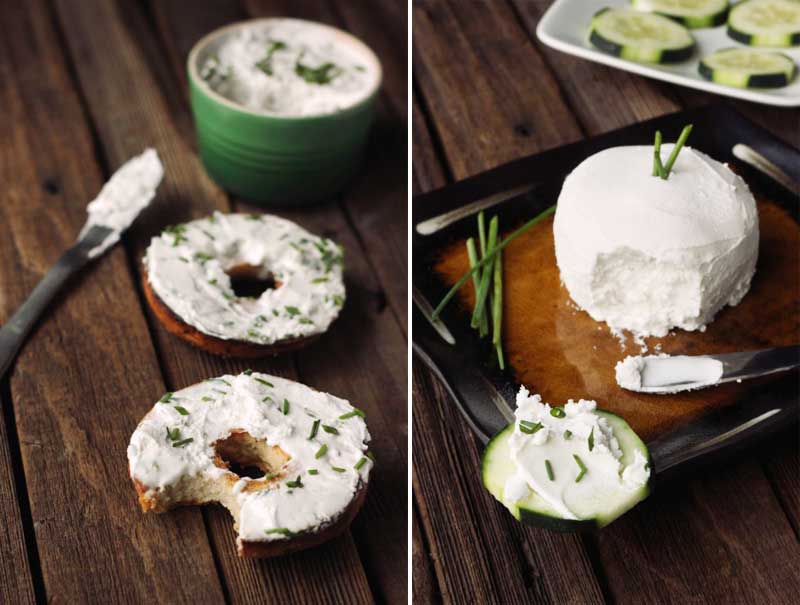How to make cheese from homemade yogurt
I recently started making homemade yogurt from pharmacy starter. Yogurt turns out great both from homemade and packaged milk - without sourness, dense, nutritious. I was wondering if it was possible to make cheese from yogurt, such as Adyghe, paneer, ricotta or Philadelphia.
Yesterday I made homemade Philadelphia cheese from yogurt. I found good photos on foreign culinary sites, since I didn’t think of taking my own during the process. I will describe it in as much detail as possible. The starter for the yogurt was not the mother’s starter from a jar (VIVO), but a second “plant” - from the mother’s first yogurt I take 4 tablespoons and add it to one liter of milk, heated to 39-40 degrees (all according to the instructions). When the yogurt is ready, I put it in the refrigerator to ripen overnight.
 Homemade Philadelphia cheese from yogurt.
Homemade Philadelphia cheese from yogurt.
She placed the colander on the pan, lined it with a linen towel and carefully poured a thick clot of yogurt into it. Covered it with a lid to prevent a crust from forming and prevent bacteria from entering, and put it in the refrigerator.
At some point, the whey has a hard time filtering through the thickening layer of cheese, so I stirred the yogurt every 3-4 hours, “scraping” any cheese that had formed that was blocking the whey from draining. This is probably not necessary, but it significantly speeds up the process. About eight hours later, I gathered the towel into a knot, tied it, and put it under a little pressure for the night. In the morning I took soft cream cheese out of the refrigerator, which I mixed with garlic and dill and added a little salt.
 Preparing paneer from fresh milk and lemon juice. Pressure from a mortar.
Preparing paneer from fresh milk and lemon juice. Pressure from a mortar.
The taste and structure of homemade cream cheese is in no way inferior to Creme Bonjour or Philadelphia. Yogurt produces cheese with virtually no sourness. One liter of country whole milk produces a liter of yogurt and 260 grams of cream cheese. Serum glass approximately 700 ml. I buy milk at a very good price - 10 UAH per liter (20 rubles), the price of cheese is a penny. Part of the whey was used for yeast dough, the other for pancakes.
Yogurt curd
I couldn’t make cottage cheese from yogurt, although there are recipes. The same yogurt as for the cream cheese, in liter jars, was placed in a water bath. For 2 hours I heated the water almost until it started boiling and turned it off - the yogurt did not want to curdle. Why didn’t I use the classic method with lemon juice or acid? Because I wanted to get the cottage cheese in layers, I didn’t want to violate the integrity of the mass, but when boiling and stirring it would turn out to be a grainy cottage cheese.
 This is what cottage cheese or Adygean cheese from homemade yogurt should look like.
This is what cottage cheese or Adygean cheese from homemade yogurt should look like.
When my patience ran out, I lined the colander with gauze and discarded the yogurt, in which, after two hours of moderate heating, the whey still separated a little. The yogurt at the bottom of the jars became a little rubbery, but in the middle it remained the same yogurt.
As I understand it, the yogurt did not have enough acid to curdle.
The result was the same Philadelphia, but denser - similar to paneer. I put it on pressure at night. From two liters of yogurt there is about 330 grams of cheese, I squeezed out the whey very well. I prepared a weak saline solution using the whey (a teaspoon of salt per one and a half cups of whey) and immersed the cheese in it directly in gauze.
I still had a liter of yogurt left, which I heated in a saucepan with the addition of citric acid - it curdled to tiny grains, it turned out to be soft cottage cheese, just a little. This is not at all what I expected, but this kind of cottage cheese went to work.
I made a sweet filling for pancakes with raisins from soft, tender cottage cheese. The pancakes were made with whey left over from making cream cheese and cottage cheese.
I came to the following conclusion. The cream cheese from yogurt turns out wonderful, but cottage cheese still needs to be prepared either from yogurt, or from fresh milk with the addition of some kind of curdling enzyme or acid, or my hands are in the wrong place (which, by the way, is not excluded).


